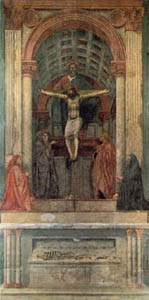Stem cell developments a sign of hope!
Returning to President Bush’s stem-cell funding policy; even though it was politically unpopular, the President believed wholeheartedly that the raw talent, intelligence, and creativity of the science sector would find a way to obtain pluripotent stem cells (the ability to become any cell type) through ethical means. In speeches and news conference answers about the stem-cell issue, Bush repeatedly supported existing ethical areas of research, and called upon researchers to find “alternative” methods of developing stem-cell medicine without treating nascent human life “as an experiment.” Toward this end, earlier this year Bush signed an executive order requiring the NIH to identify all sources of human pluripotent stem cells, and invited “scientists to work with the NIH, so we can add new ethically derived stem-cell lines to the list of those eligible for federal funding.”
The Science Establishment pouted and the New York Times castigated the president’s call. But other scientists had already taken up the president’s challenge, and their work was paying off. Experiments in mice by Rudolf Jaenisch at Harvard demonstrated proof of principle for “altered nuclear transfer” (ANT), a theoretical method of deriving pluripotent stem cells without creating and destroying embryos. Don Landry, Professor at Columbia University Department of Medicine, developed a way to identify dead embryos for potential use in stem-cell research — which would be no more unethical than researching on cadavers. Perhaps most excitingly, Kyoto University’s Shinya Yamanaka reprogrammed skin cells from the tails of mice, and reverted them back to an embryonic-like stem-cell state — offering tremendous hope that every therapeutic benefit scientists believed could be derived from therapeutic cloning, could instead be achieved by regressing a patient’s own tissues.
Then, last week very big news: Ian Wilmut — who opened the Pandora’s Box of human cloning with the creation of Dolly the sheep, and who two years ago obtained a license from the United Kingdom’s Human Fertilization and Embryology Authority to create cloned human embryos from the cells of Lou Gehrig’s disease patients — stunned the scientific world with the sudden and unexpected announcement that he had rejected human cloning research, in favor of pursuing cell reprogramming as an ethical and uncontroversial means of obtaining pluripotent cells. Wilmut told the Telegraph:
The odds are that by the time we make nuclear transfer work in humans, direct reprogramming will work too.
I am anticipating that before too long we will be able to use the Yamanaka approach to achieve the same, without making human embryos. I have no doubt that in the long term, direct reprogramming will be more productive, though we can't be sure exactly when, next year or five years into the future.
Finally, today came the Krakatau of stem-cell announcements: Reprogramming has been achieved using human cells. As reported by the journal Science, researchers reverted human connective tissue cells back to an embryonic-stem-cell-like state — and then differentiated them into all three of the body’s major tissue types. If this work pans out, there will be no need to create human cloned embryos for use in embryonic-stem-cell therapies.
I believe that many of these exciting “alternative” methods would not have been achieved but for President Bush’s stalwart stand promoting ethical stem-cell research. Indeed, had the president followed the crowd instead of leading it, most research efforts would have been devoted to trying to perfect ESCR and human-cloning research — which, despite copious funding, have not worked out yet as scientists originally hoped.
Do read the full article at National Review
(H/T to Gerald)










0 Comments:
Post a Comment
<< Home